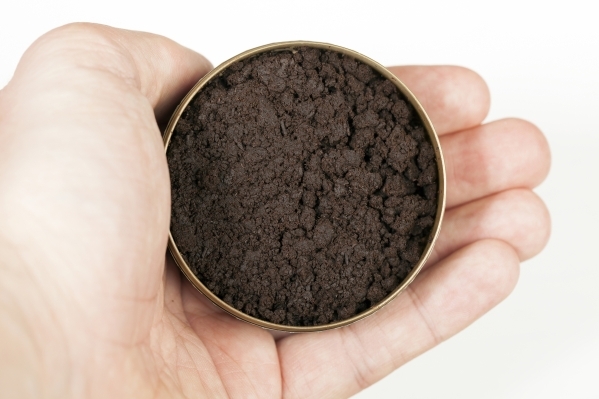Smokeless tobacco no safer than cigarettes
Even high school athletes know how important endurance is to athletic success. So it's probably not surprising that high school athletes nationally smoke cigarettes and cigars at a lower rate than high school students who aren't athletes.
The problem, according to the U.S. Centers for Disease Control and Prevention, is that high school athletes also use smokeless forms of tobacco at higher rates than non-athletes.
But is smokeless tobacco a safer alternative to smoking? Not at all, says Maria Azzarelli, tobacco control program coordinator for the Southern Nevada Health District.
According to the CDC, the use of cigarettes and cigars among all high school-age students dropped from 31.5 percent in 2001 to 19.5 percent in 2013. The same trend holds true in Clark County, Azzarelli says, where smoking among all high school-age youth fell from about 33 percent in 1999 to about 7.3 percent in 2013.
In fact, Azzarelli says, "we have one of the lowest youth smoking rates in the nation, and that's wonderful."
The problem is that decreased use of so-called combustible tobacco products has been accompanied nationally by the greater use of "what we call OTP, or other tobacco products" such as smokeless tobacco, e-cigarettes and hookahs.
"We believe the trend is, people are jumping to those products," Azzarelli says, probably in the mistaken belief that they're "a safer option" than cigarettes.
According to the CDC, the use of smokeless tobacco products among non-high school athletes remained unchanged from 2001 to 2013 at 5.9 percent, while their use among high school athletes increased from 10 percent to 11.1 percent.
Smokeless tobacco among professional athletes could be helping to drive the trend. Seeing pro baseball players use smokeless tobacco "does influence young people," Azzarelli says. "Culturally, you look at your hero in sports using these products ... and you mimic their behavior."
But smokeless tobacco products pose their own risks to users, Azzarelli says. For example, nicotine is a vasoconstrictor that makes the heart work harder to pump blood throughout the body, "so it has an effect on the cardiovascular system."
Smokeless tobacco also contains harmful chemicals, and prolonged exposure to the chemicals on mouth and gum tissues can cause oral cancer, gum disease and a variety of medical and dental problems.
Nicotine also is addictive and it's hardly benign, Azzarelli says. "It's a pesticide; it kills things. So it's dangerous for organs of the body."
Fortunately, smokeless tobacco rates in Nevada "have historically been quite low," Azzarelli says, with the most recent numbers showing that smokeless tobacco use among Nevada high school students "hovers in the 3 percent category and doesn't get much higher than that."
While smokeless tobacco poses "a different risk" to users than combustible tobacco products, it "can lead to death, ultimately, the same as combustible (products)," Azzarelli says.
Free resources to help tobacco users quit can be found by calling the Nevada Tobacco Quitline at 1 800-QUIT-NOW (the line is a toll-free national number that will connect callers to their own state's resources).



















